Part I: The Founding And Building of
The Venerable Golf And Country Club
Story by Matthew St. Amand
Supporting Notes by Bob Britton
Photography courtesy Beach Grove Golf & Country Club
The year was 1921. World War I—“the war to end all wars”, as British author and social commentator H. G. Wells, referred to it—was only three years in the past. The Spanish Flu Pandemic was not yet a year gone. The most popular movie on the silver screen was The Kid, starring Charlie Chaplin, Edna Purviance, and Jackie Coogan. The top song of the time was “I Ain’t Got Nobody” recorded by Marion Harris. In Canada, the legendary fishing and racing gaff rig schooner, Bluenose, was launched under the command of Angus Walters. The country’s Prime Minister was Arthur Meighen, followed, in December that year, by William Lyon Mackenzie King. Ontario’s Premier was Ernest Charles Drury, head of a United Farmers of Ontario–Labour coalition government. Herbert W. Wilson was Windsor’s Mayor.
Windsor’s newspaper of record, The Border Cities Star—price: 3 cents, circulation: 17,500—published the following headlines in its Monday, January 10, 1921 edition: “Turks Fight To Retain Aintab”, “Fear Felt For Safety Of American Aeronauts”, “Husband Won’t Take Wife’s Fast Seriously”.
Inside the paper, readers saw a half-page ad that Wilkson’s Boot Shop, at 35 Ouellette Avenue, was having a “Price Revision Sale”. MacDonald’s Cut Brier Smoking Tobacco proclaimed itself “The tobacco with a heart!”—a half-pound tin cost 85 cents. A page three headline read: “Studebaker Takes On Hundred Men At Walkerville”.
And on this very same day, a charter for the “St. Clair Beach and Country Club” was obtained.
In the July 9th edition of the newspaper, a small blurb appeared on the front page, titled “Name is Changed by Country Club”, which reported: “To avoid confusion with similar names, the St. Clair Beach and Country Club has decided to change its title to Beach Grove Country Club… Regular play will start for the first time on a temporary nine-hole course next week. Construction of a permanent 18-hole course is expected to be completed in six weeks, but it is not probable it will be in use until next year.”
And so begins the story of the venerable area golf and country club celebrating its 100th year of operation in this science fiction year, 2021.
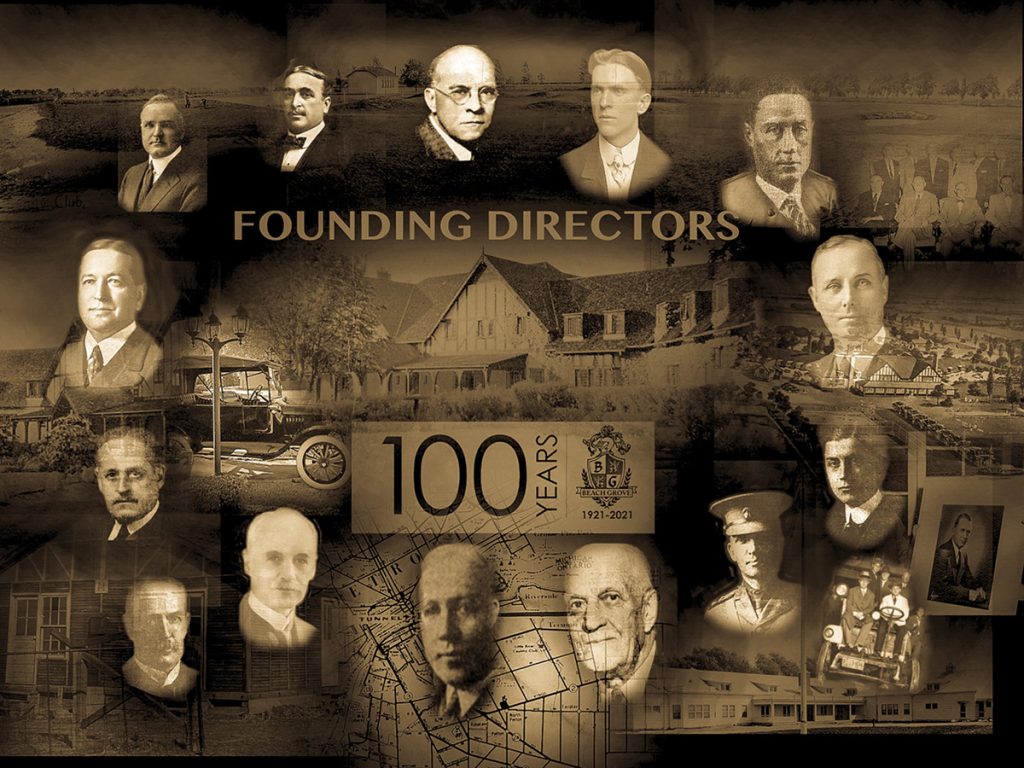
The contract to construct the golf course was awarded to the now famous designer Stanley Thompson of Toronto. Construction of the course began on June 23, 1921.
During construction, Beach Grove’s Board turned its attention to plans and drawings for the clubhouse. Concepts were presented at the Board’s meeting on November 18, 1921 by the principals of the Cameron and Ralston architecture firm, located in Windsor. Cameron and Ralston’s initial cost estimate for the clubhouse was $75,000, complete, including equipment. The plans were such that the building could be constructed in sections, with the option of adding onto the structures as future needs dictated. Although the Board approved the plans, it decided not to proceed with any further action until the membership had the opportunity to examine them.
On February 10, 1922, the Board held a meeting prior to the Annual General Meeting of members. The Board appointed a Building Committee to consider Cameron and Ralston’s plans and how to finance the project. The prevailing thought was that work on the clubhouse should commence as soon as possible to attract and increase Club membership. The newspaper kept pace with Beach Grove’s progress, publishing in that day’s edition: “Beach Grove Club Meeting Tonight… To Elect Directors and Discuss Plans For New Club House.” The blurb read, in part: “It is proposed to have the club house built by the time the new 18-hole course is opened June 1.”
As often happens with projects of this scale, details were changed, others were added, such as the flooring: changed from maple to birch. Additional French doors from the dining room to the porch were added. A larger water tank, 500 gallons, was added as fire protection. Copper screening was added to all doors, windows, and porches. There was a provision for upstairs servants’ bedrooms. The details were reviewed right down to agreeing the exterior of the club house should receive an extra coat of paint, as well as the installations of an insulated refrigeration room, electric call buttons, a steam heating system, and an oil-burning boiler.
The Founding Members were a collection of prominent local men, whose names would be familiar to nearly any frequent reader of The Star: John Henry Coburn, Fredrick Daniel Everts, George Harrison Fenkell, Charles Westlake Hoare, William Henry Isaacs, Charles Archer Lanspeary, Angus McLean, Henry Benjamin Parsons, Sidney Cecil Robinson, Herman Harvey Sanderson, Bertram Curtis Spitzley, William Albert Spitzley, Hobart Anderdon Springle, John Henry Smith. Also among the first members were Harrington Edward Walker and Hiram Holcomb Walker, grandsons of the legendary Hiram Walker, who founded the world-renowned Hiram Walker and Sons Ltd. distillery in 1858.
In the April 22, 1922 edition of The Star, the following headline appeared: “Officers of Beach Grove”, with a sub-heading: “Strong Directorate and Committees Named” listing the members and their new positions: President: Harrington E. Walker; Secretary: J. H. Coburn; Treasurer: H. B. Parsons; Business Manager: Don F. Kennedy; Directors: Harrington E. Walker, Hiram H. Walker, Dr. C. W. Hoare, Dr. H. H. Sanderson, B. C. Spitzley, M. G. Campbell, C. A. Lanspeary; Executive and Finance Committee: B. C. Spitzley, Dr. C. W. Hoare, J. H. Coburn; Membership Committee: Harrington E. Walker, Dr. H. H. Sanderson, J. H. Coburn; Chairman of Greens Committee: Don F. Kennedy; Professional: Frank Lewis; Greenskeeper: H. J. Walker; Chairman of Clubhouse Equipment and Furnishings: Clement King.

Mr. N. Bates Ackley, a director, wielded the gilded spade, while Mr. J. D. Mansfield, a prominent member, started the plow into the ground. 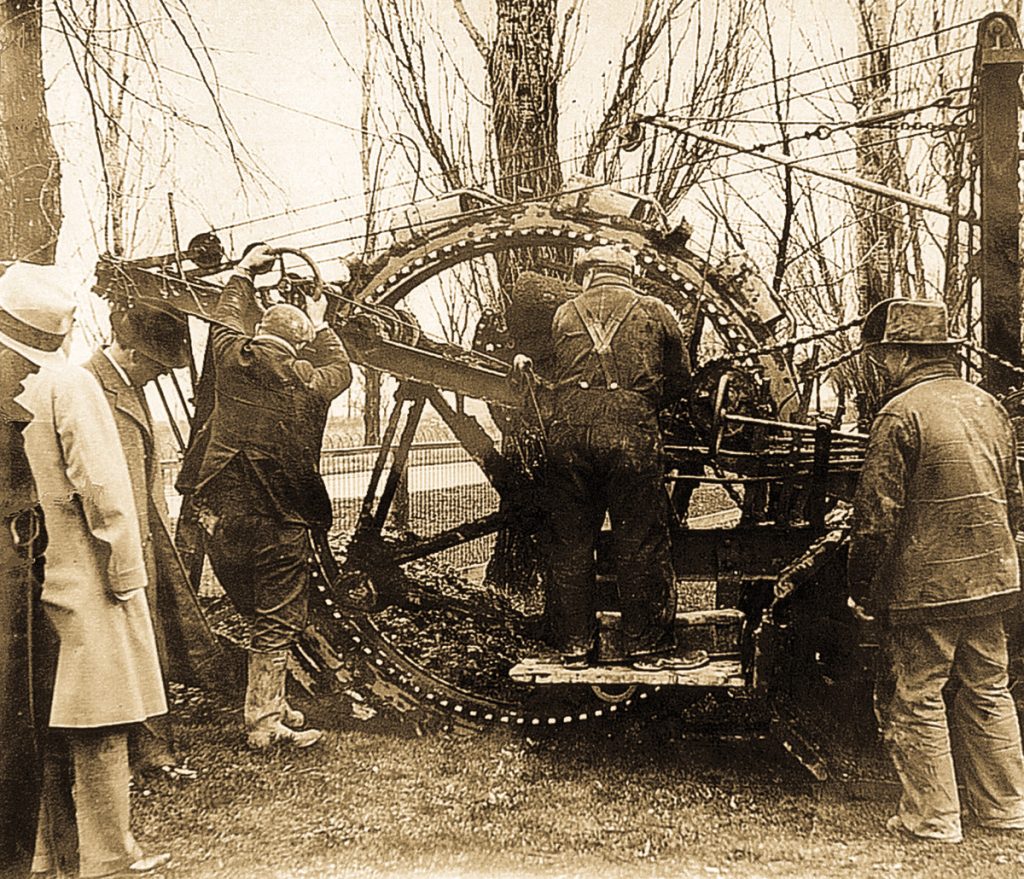
Working on the course to prepare for the opening on August 19, 1922. 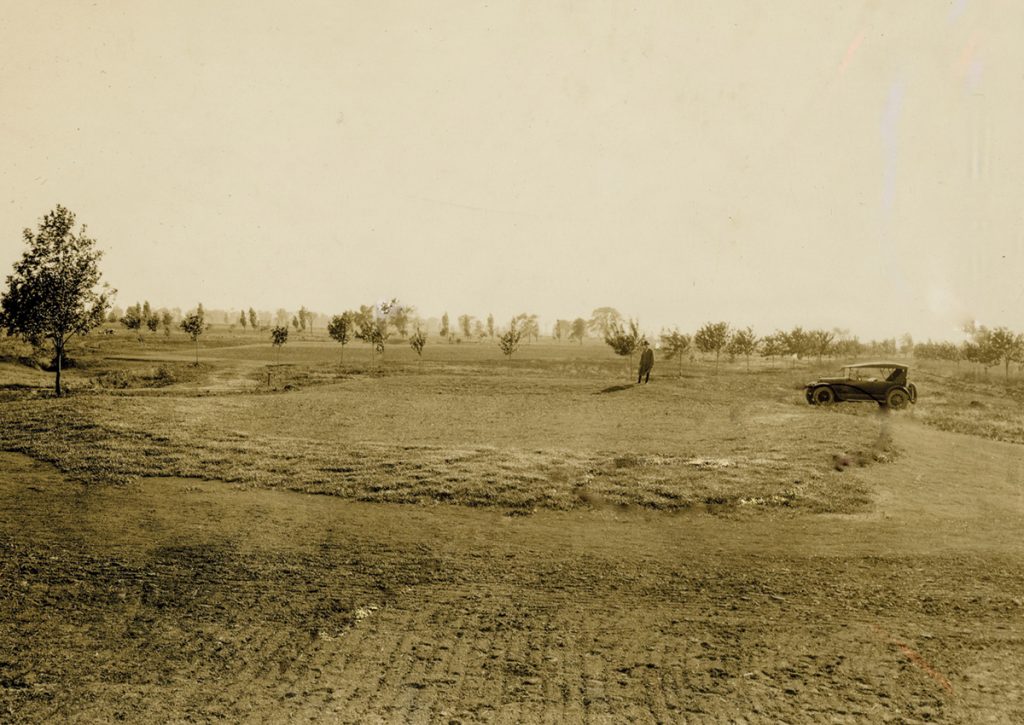
left: Laying out the landscape for the future of Beach Grove’s golf course, 1921. 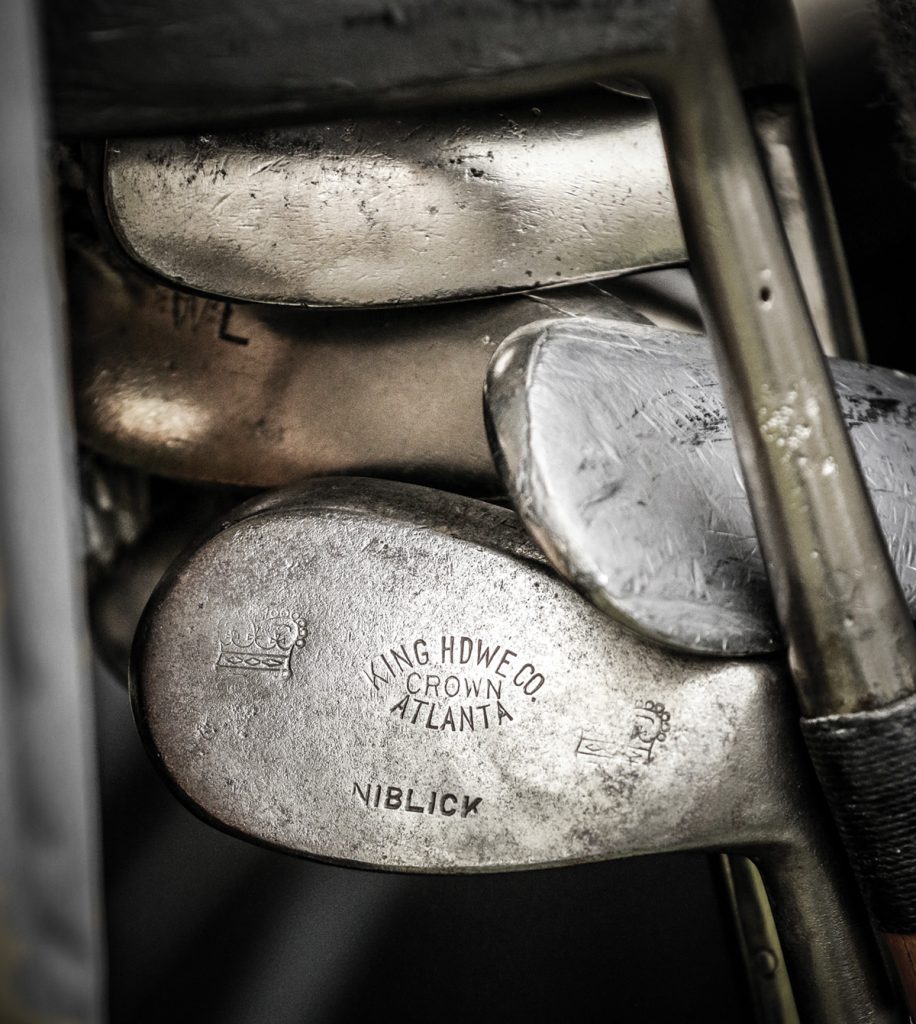
Vintage hickory golf clubs (“hickory sticks”) from early 1900s. 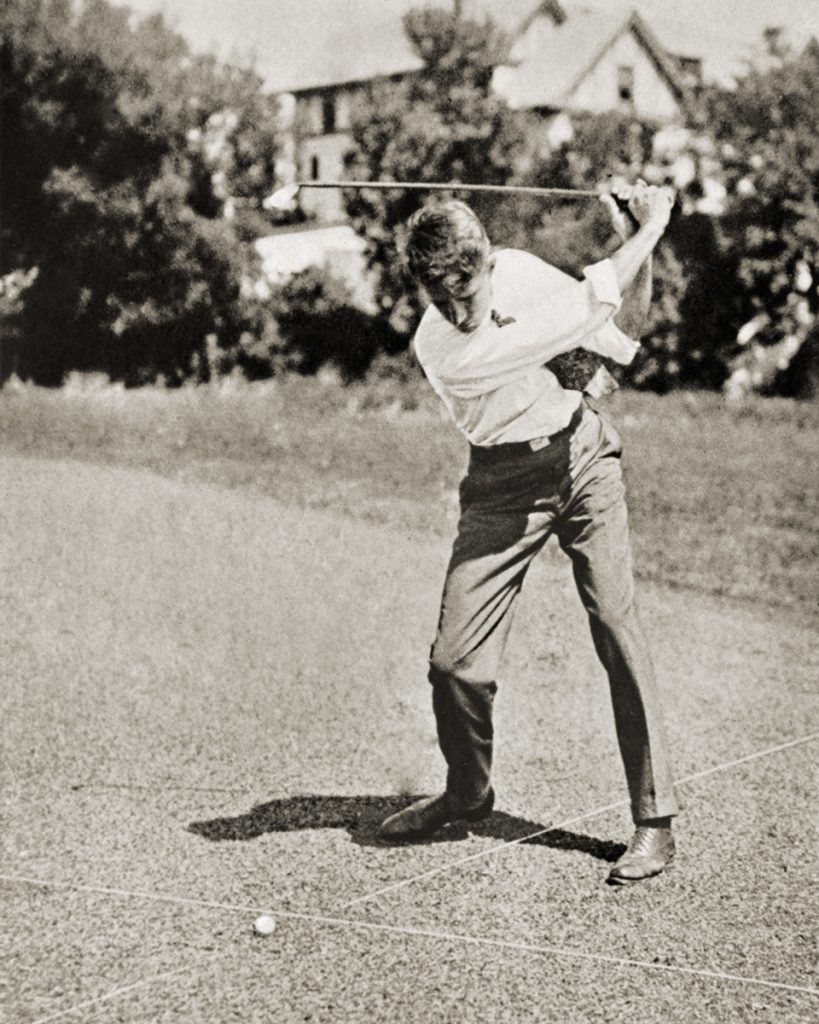
One of the earliest images of a golfer enjoying the new course.
The article stated that the: “Beach Grove course has been built with a view to permanency… The Club is helped by a natural, distinctive quality of turf, which will give the fairways and greens an unsurpassed quality. The seed, five tons of it, was imported from New Zealand, and is known as Chewing’s Fescue grass, which grows almost solid and will provide a superfine surface.”
In the August 19, 1922 newspaper, an artist’s depiction of the north-easterly view of the clubhouse from Riverside Drive was published, accompanied by a write-up: “The above drawing shows the beautiful and spacious new Beach Grove Country Clubhouse which opened to members of the club today. Both this morning and this afternoon handicap tournaments for members were held, and with ideal weather for golf, a large number went around the course. This evening the club’s restaurant will be thrown open to the men members with a combination dinner and smoker. The formal opening of the club, however, does not take place for two weeks when special arrangements will be made for entertaining the women members. The private ferry service running daily from the foot of Parkview Avenue, Detroit, to the club house dock, was started today.”
Following its official opening, Beach Grove was mentioned, periodically, on “The Woman’s Page” of the newspaper. For instance, in the Thursday June 21, 1923 edition it’s stated that “Major and Mrs. E. M. MacLean, Argyle road, Walkerville, entertained a few friends at Beach Grove Country Club, at an informal bridge dinner, last evening.”
From the same edition: “Miss Fenkell of Detroit, entertained a number of friends at a bridge luncheon at the Beach Grove Country Club, yesterday.”
“Mr. E. Harrington Walker, President of Beach Grove Country Club extended the privileges of the club to the chiefs of police for luncheon today.”
Above an ad for “Alluring Pearl Necklaces of Indestructible Quality $5 and $6” at Howell Bros. & Knowlton Jewelers-Watchmakers at 41 Ouellette Avenue—on September 10, 1924 appeared an article titled, “Bridge Luncheon At Beach Grove To Be Popular Event”, subtitled “Cards and Mah Jong to Occupy Afternoon at Delightful Local Clubhouse; Special Bus Service for Tomorrow’s Affair”. This was part of an ongoing effort to appease and involve the country club’s “golf widows”—the women whose husbands loved spending their free time on the links of Beach Grove.
It was clear, too, that Beach Grove enjoyed lively competition with other area courses. In the Thursday, August 26, 1926 edition of The Star, writer Brock Smith described how Beach Grove won an “inter-club match” with St. Clair Country Club: “The match is a semi-annual event… There were 16 players a side, making eight four-ball matches… Bob McKelvie, pro at Beach Grove, shot a 75, and Bill Fox, pro from St. Clair, shot a 76.”
Such nail-biter, down-to-the-wire matches only added to the prestige and excitement surrounding Beach Grove.
The fun and frolic, however, ended abruptly in the frigid, early morning of February 26, 1927, when a fire broke out in the Clubhouse, burning the entire structure to the ground.


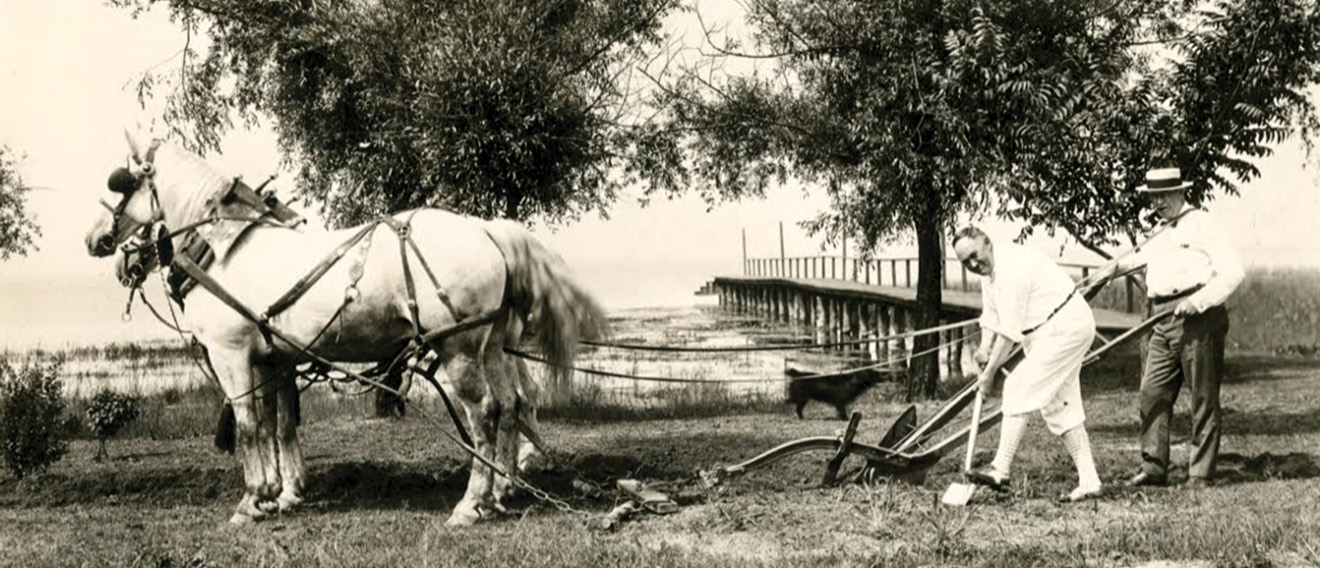

Add comment